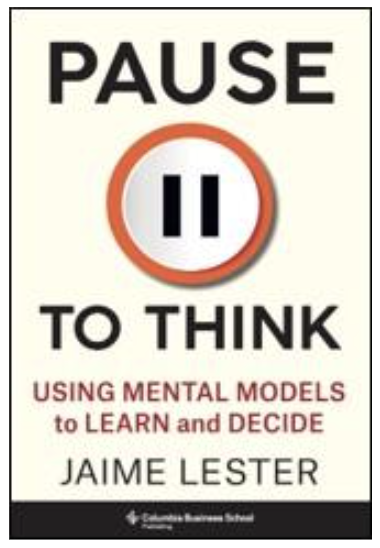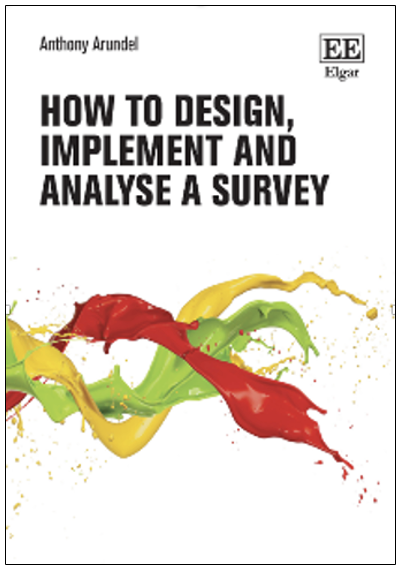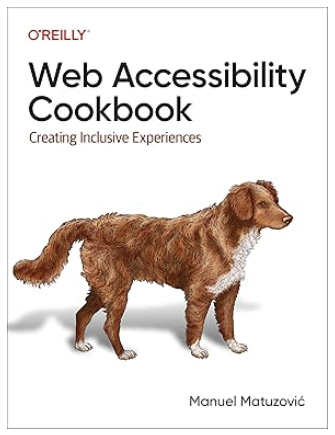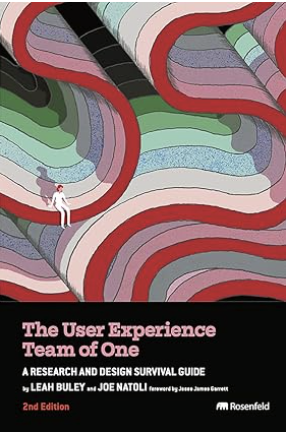Book Reviews: Human Factors, Accessibility, & Usability

Designing Accessible Learning Content: A practical guide to applying best-practice accessibility standards to L&D resources, 2nd ed.
Susi Miller. London, UK: Kogan Page. 2025. 374 pages, including index.
Index terms: accessibility, disabilities, learning and development, WCAG
Reviewed by Michelle Gardner (mrswtgjr@gmail.com)
The purpose of Designing Accessible Learning Content: A practical guide to applying best-practice accessibility standards to L&D resources is to help learning and development (L&D) professionals (rather than website developers) interpret accessibility standards and create inclusive learning experiences that comply with those standards. This book achieves its purpose with its checklists, real-world examples, and industry perspectives.
Susi Miller doesn’t assume readers have prior knowledge about accessibility and authored this book to bridge the gap between understanding accessibility standards and putting them into practice. She sets the tone early when she writes, “the contribution we make to people’s lives by creating accessible eLearning resources is indeed ‘dramatic’” (p. 3). The disabled population is estimated to be about 15% globally, which equates to more than 1 billion people who can benefit from access to digital learning.
When Miller published the first edition in 2021, she was acutely aware that her interpretations of the Web Content Accessibility Guidelines (WCAG) were based on her own experiences and a few of her colleagues. She was prepared for it to start a debate in the L&D industry. She has since learned that it helped learning practitioners become more confident about applying accessibility principles to their content.
Four years later, Miller wrote the second edition after the October 2023 update to the WCAG standards. In that time, she learned how to improve and enrich the content from the first edition.
Chapter 1 provides an overview of the book’s four parts. Chapter 2 covers key terms, WCAG facts and challenges, practical applications of WCAG standards (including “progress over perfection” [pg. 33]), authoring tool considerations, and an accessibility strategy. By the end of this chapter, Miller realizes “just how much information there is to consider when it comes to getting started with designing accessibility learning content” (p. 58).
WCAG version 2.2 has 55 standards at levels A and AA that are legal requirements. When you add in level AAA, that number increases to 86. It’s no wonder accessibility “has the reputation of being overwhelming and difficult to implement” (p. 29).
For readers just starting with accessible learning content, know this: it’s important to meet Level A standards to ensure that learners with disabilities and access needs have an equal learning experience. “In some cases, not meeting level A requirements can result in learners with disabilities not being able to access certain aspects of the learning content at all” (p. 25).
Level AA standards cover more disabilities and assistive technologies. “In most cases, not meeting these standards will not prevent someone from accessing content altogether” but it may “prevent learners from having a positive learning experience” (p. 25).
The second half of the book focuses on the principles of the WCAG framework: perceivable, operable, understandable, and robust. The principles are subdivided into 55 standards. While they can be used to develop content, many L&D practitioners find them better suited for conformance testing.
In Part 3, Miller addresses every standard by:
- Defining the topic (captions, focus order, navigation, status messages).
- Going into greater detail with key information.
- Giving brief instructions on how to conform.
- Calling out exceptions to the standard.
- Explaining why these standards matter to people with disabilities.
- Suggesting ways to test conformity.
- Providing useful resources.
Designing Accessible Learning Content bridges the gap between understanding accessibility standards and putting them into practice. It equips practitioners with the knowledge and tools they need to comply with standards, and it lays out the ethics of accessibility.
Originally, the WCAG standards applied to web developers building information and ecommerce websites; they were not aimed at learning practitioners wanting to create engaging, interactive learning resources. The biggest issue learning practitioners report is that the WCAG standards are not designed for content created with digital authoring tools. Miller explores such tools in the Getting Started chapter and discusses WCAG relevance for “open-control” versus “template-driven” tools (pp. 37–38).
In Chapter 3, Miller explores disability and describes each type:
- Vision (cataracts, age-related macular degeneration, glaucoma, and diabetic retinopathy)
- Hearing (spatial processing disorder, noise-induced hearing loss, and tinnitus)
- Motor (physical needs), like arthritis, Parkinson’s disease, and motor neurone disease
- Cognitive (Down syndrome, dyslexia, and autism)
- Speech (stammer, Tourette’s syndrome, and traumatic brain injury)
She also touches on temporary and situational needs (anything that lasts less than 12 months); for example:
- Recovering from eye surgery or suffering from a migraine.
- An ear infection or not having headphones in a noisy environment.
- A broken wrist or a wireless mouse that’s run out of charge.
- Stress or working in a distracting office.
Chapter 4 is an overview of the most common forms of assistive technology that learners use. Miller goes into greater detail and shares her own learning experiences with devices like screen readers, text-to-speech, assisted listening devices, adaptive keyboards, voice recognition, and speech-generating devices.
It’s no wonder Miller is praised for her comprehensive, empathetic approach to digital accessibility in learning design. She certainly makes the complex WCAG 2.2 standards more approachable. Still, she acknowledges that applying accessibility standards often involves subjective judgment. Nonetheless, her emphasis on the evolving nature of accessibility standards makes Designing Accessible Learning Content an excellent reference for L&D professionals.

Pause To Think: Using Mental Models to Learn and Decide
by Jaime Lester. Columbia Business School Publishing. 2024. 232 pages.
Index Terms: Cognition, decision-support, learning, memory
Reviewed by Geoffrey Hart
Mental models let us create simplified understandings of our complex world and weave a framework that can efficiently store new information. Subsequently, referring to these models rather than having to create a new one for every situation lets us respond to situations faster and more efficiently and choose the optimal response. We use similar mechanisms to recall stored knowledge and integrate new knowledge into an ever-growing model of our world, thereby creating an increasingly powerful and useful set of tools for understanding. But this approach has drawbacks.
In Pause To Think: Using Mental Models to Learn and Decide, Jaime Lester describes a powerful suite of tools for remembering, thinking, deciding, and learning based on the many ways we use mental models. In particular, he describes the cognitive biases that can get in our way. This book will interest anyone who wants to learn, judge alternatives, make better decisions or solve problems better in real-world contexts. But as the title suggests, we must first learn to pause and reconsider our immediate reactions to situations—reactions that often invoke subconscious biases and learned responses that may not be appropriate in a new situation. Lester reminds us that all models have omissions, errors, and limitations (“the map is not the territory”) (p. 93). Pausing to re-examine our biases lets us choose the most appropriate models—those that support a more effective response.
This pause is important because instinctive, subconscious assessments (our “gut feelings”) may reflect either learned wisdom or subconscious cognitive biases. Though these shortcuts help us respond rapidly when we need to think fast, incorrect or misleading biases increase the risk of reaching the wrong conclusion. Pausing to identify the biases that might be affecting our thought process lets us assess those biases and integrate them with a more conscious assessment. Lester lists thirty-two biases to avoid that he discusses in five contexts: decision-making, learning, understanding, investing, and happiness. Each context has its own chapter.
Chapters 2 to 5 introduce key rules for improving our models in disciplines such as science and business, and illustrate how to think about problems both in the discipline that gave rise to a method and in unrelated disciplines. Lester supports these principles by thought exercises that would be useful in a classroom discussion, and he provides potential answers in an appendix. His approach reveals how strongly perspective affects what we see and how considering multiple perspectives provides a more holistic view of any situation, as in the parable of the blind men describing an elephant. Two observations about expectations struck me as particularly profound: First, we judge outcomes relative to our expectations rather than the actual outcome quality, so making expectations explicit helps us to be more satisfied with the outcomes. Second, it’s easier to quantify risks than rewards, so we should not over-weight risks. As communicators, this also reminds us of the importance of managing expectations.
Lester presents a simple, flexible seven-step framework for making better decisions and notes that for decisions with greater consequences, we should apply the framework most rigorously. However, it lacks an explicit step to examine trade-offs among alternatives, although that trade-off is mentioned in subsequent chapters. He doesn’t explicitly reference schema theory and inadequately describes game theory, two research fields that would have deepened his descriptions. Comic strips begin each chapter to illustrate key principles, but the tiny text is often almost unreadable and I’m not sure how much value they add.
Unfortunately, serious errors escaped peer review. Lester’s discussion of statistical significance doesn’t explain important concepts such as the difference between means and medians, and whether a “statistically significant” result has practical significance. He provides a good discussion of the criteria for judging a scientific study, but erroneously describes Occam’s razor as meaning that the simplest solution is most likely to be right; the actual meaning is that we should not make an explanation more complex than necessary (“parsimony”). Similarly, his claim that “Newtonian physics lost out to Einstein’s” misses a more important point: Newton’s physics remain valuable, but Einstein expanded them to cover important new situations (p. 24). Though Lester correctly counsels caution in predicting trends, his explanation of “reversion to the mean” incorrectly states that “trends tend to reverse” (pp. 95–96). That’s only true for random processes, for which there is no causal (non-random) factor that drives a directional trend.
His description in Chapter 9 of investing is dangerously misleading. He states that “most [investment advice books] are now hopelessly out of date,” without noting that many traditional principles (investing in sound enterprises, diversifying investments) remain valid (p. 159). He incorrectly suggests that equities are the best investment approach, thereby ignoring the importance of diversification and of mixing speculative and conservative investments. His claim that investors are better off choosing stocks randomly than hiring a professional advisor is based on a long-ago observation that investment professionals rarely outperform the market in the long term, but he neglects to mention that amateurs usually do worse. His suggestion that “prospective [stock] returns are best when the current situation seems worst, and vice versa” (p. 161) is called “contrarian” investing, and to succeed, it requires knowledge of what factors are changing a stock’s price; not knowing that reason can lead to disaster. His suggestion that it’s easy to become an above-average investor by following his advice ignores an inconvenient fact: to paraphrase Garrison Keillor, were this possible, all investors could be above average. He also fundamentally misunderstands the importance of the price to earnings ratio by suggesting it defines how long it would take to repay a stock investment, thereby ignoring the underlying the stock’s value.The book’s overall message is this: pause to think things through rather than relying solely on your gut. That’s good advice for readers given the above-mentioned errors, which undermine confidence in Lester’s many other well-founded suggestions. Pause to Think won’t teach you much you didn’t already know, but it packages this knowledge in a strong framework that will help you apply this knowledge in your daily life or work. In particular, it does a decent job of showing how our mind and gut are more powerful when they work together than apart, so long as we pause to think about their sometimes-contradictory advice.

UX Design with Figma: User-Centered Interface Design and Prototyping with Figma
Tom Green and Kevin Brandon. New York, NY: Apress. 2024. 564 pages, including index.
Index Terms—design systems, Figma, prototyping, UX design
Reviewed by Guiseppe Getto, IEEE PCS Member, Mercer University, getto_ga@mercer.edu
UX Design with Figma: User-Centered Interface Design and Prototyping with Figma is one of the more thorough texts I’ve seen on how to embed Figma into a repeatable, team-based UX workflow. It doesn’t treat the tool as an end in itself. Instead, it walks readers through how Figma can support collaborative design efforts, especially those that need to scale. Tom Green and Kevin Brandon write for a mixed audience: new UX designers, developers crossing into design work, and experienced practitioners looking to refine the way they use Figma with product teams.
Where the book really shines is in how it frames Figma as a living part of the design process, not a one-off deliverable generator. Rather than just explaining how to make a wireframe or use a component, it tackles the broader context: how those components get communicated, how feedback loops work in real teams, and how to build out systems that won’t collapse the first time someone pivots the strategy.
Green and Brandon try to do two things at once: show readers how to use Figma and show them why design tooling needs to be responsive to broader UX goals. They emphasize up front that this is not a book about graphic design; it’s a book about designing products that make sense to users, meet organizational needs, and hold up in production.
A big part of that is getting more from the tools we already have. The authors position Figma as a kind of connective tissue—linking stakeholders, capturing early-stage thinking, testing with real users, and ensuring that the handoff to development doesn’t derail the intent behind the design. If you’ve spent time working across UX, content strategy, and development, you’ll recognize this as one of the thorniest parts of digital product design. Green and Brandon don’t solve it completely (who does?), but they offer practical scaffolding: workflows that can adapt to different levels of design maturity without starting from scratch.
The book is broken into 11 chapters, which follow a roughly linear design process but allow readers to dip in and out as needed. The early chapters are aimed at beginners—getting oriented to the Figma interface, understanding frames and components, using FigJam for early ideation. From there, the focus shifts toward designing for user flows, building interactive prototypes, and documenting decisions in a way that other team members (especially developers) can act on.
The focus on reusable systems is one of the more useful through-lines. The authors return repeatedly to the idea that design artifacts are only useful if they scale. That means building variables into components, using consistent naming conventions, and avoiding the kind of ad-hoc decisions that make files hard to maintain. This isn’t revolutionary, but it’s often skipped in books that are too focused on features and not enough on workflows. The authors strike a nice balance here: you get just enough technical detail to apply concepts immediately, but not so much that the book becomes a software manual.
Later chapters dig into the nuances of interactivity, design tokens, and developer-ready exports. These are the places where tools often outpace practice—and where newer designers tend to struggle. Green and Brandon handle these topics well, showing both the “how” and the “why.” For example, they spend time on why a particular interaction might help or hinder user experience, not just how to animate it. That attention to use context is where this book distinguishes itself from many Figma-centric tutorials floating around online.
For technical communicators, especially those working alongside design and product teams, UX Design with Figma offers a concrete look at how visual design systems evolve—and how communicators can play a bigger role in that evolution. The book implicitly makes the case that UX design isn’t just a visual discipline. It’s a form of collaborative problem-solving, and communication is a key component.
There’s also a strong content strategy subtext running through the book, even if it isn’t always named that way. Many of the examples involve creating wireframes and flows that reflect real user goals, not placeholder content or lorem ipsum screens. For communicators who’ve been trying to make a case for earlier involvement in the design process, this book offers some shared language. It positions design as something that starts with the user and ends with the team—making space for writing, research, and content decisions along the way.
Additionally, the authors’ treatment of design systems is relevant for anyone maintaining large-scale documentation. Their advice on modularity, naming conventions, and reuse directly mirrors what technical writers deal with when managing docs-as-code or structured authoring platforms. There’s an opportunity here for shared learning between teams that are often siloed.
One of the book’s key strengths is how it treats Figma as a tool embedded in larger systems of people and practices. Green and Brandon know that most of us don’t work in idealized product teams with unlimited time and budget. Their tone is pragmatic, occasionally a little blunt, and grounded in lived experience.
Another win is the inclusion of FigJam throughout the book. Many UX guides skip the messy early stages of design—the sticky-note phase—and focus only on the polished prototype. This book gives equal attention to the brainstorming, mapping, and alignment activities that make prototypes meaningful in the first place.
That said, readers looking for cutting-edge use of Figma variables, headless design systems, or full-scale Dev Mode implementation will find only an introduction here. This isn’t a book for power users. It’s a book for people trying to design better systems, not necessarily flashier screens. And depending on your needs, that might be exactly the point.
UX Design with Figma delivers on its promise: to provide a user-centered, team-oriented approach to digital product design using Figma. It doesn’t pretend Figma will solve your organizational problems, but it does show how the tool can be used more strategically in the service of collaboration, documentation, and iterative design.
For professionals in technical communication, UX, and adjacent fields, this book offers more than a feature walkthrough. It’s a blueprint for how to approach interface design when the goal is clarity, consistency, and accountability across teams. Whether you’re documenting flows, building out personas, or working on a shared design system, this book will likely give you a few new moves—and maybe a little validation that the messy middle of design work is where real progress happens.
Recommended for UX designers, researchers, and technical communicators looking to build sustainable, team-based workflows in Figma. Especially useful for hybrid roles or educators teaching interface design in a cross-disciplinary context.

Speculative Everything: Design, Fiction, and Social Dreaming
Anthony Dunne and Fiona Raby. Cambridge, MA: MIT Press. 2024. 240 pages, including index.
Index Terms—alternative realities, biotechnology, design fiction, imaginary scenarios, speculative design
Reviewed by Josh Anderson, Information Architect, Paligo.
Although much has changed technologically since the original 2013 release of Speculative Everything: Design, Fiction, and Social Dreaming, the material holds up well over a decade later in its first paperback edition. The book explores a type of design that concerns itself with representations of alternative realities. It’s less about predicting the future and more about asking “what-if”—for example, how would humans behave differently if we lived 150 years, if we could seed clouds that produce flavored snow, or if we redrew national boundaries around energy sources. The speculative designer draws their audience into these hypothetical scenarios by illustrating glimpses of life in these unreal worlds: an image of an old man atop a toy rocking horse, a drivable ice cream van affixed with (non-working) cloud-seeding canons, or a map of “Eneropa,” a theoretical version of Europe where the continent shares a renewable energy grid. Ultimately, these are designs of ideas; the props or graphics used in their representations are secondary, intended only to be the starting point for the audience’s imagination about what life would be like in a world that produced these artifacts.
Speculative Everything hits its stride in the fourth chapter that focuses on biotechnology. Here, Anthony Dunne and Fiona Raby highlight several speculative design projects that move beyond the entirely theoretical and instead ground themselves in the real-world; my favorite is Common Flowers/Blue Rose, in which the artists reverse-engineered the first commercially available genetically modified flower and disseminated instructions for others to do the same. The point is to unsettle the idea of copyrighting nature. It is at this intersection of art, science, and activism that speculative design is at its most fascinating.
Nearly every page contains a striking photograph, illustration, or model; the result is a book that’s pleasant to flip through. However, it’s when I turned my attention to the text between each image that I realized that most of the speculative design projects are more head-scratching than they are thought-provoking. Many of the images are simply not self-explanatory enough, and even reading what little textual explication the authors might provide, I was often left speculating not about some theoretical alternative existence but about what in the world I was looking at. Without the authors’ long description, there was certainly no way, for example, that I would have guessed a photograph of a person foraging with a comically gargantuan green plastic straw strapped to their back was meant to evoke “overpopulation.”
While Speculative Everything is mostly written for designers and artists, writers will probably resonate with Dunne and Raby’s advice on writing effective fiction: “You can ask an audience to believe the impossible, but not the improbable” (p. 95). The book does a thorough job exploring how and why to create works that transport audiences to another reality, even if some of its examples are more surreal than they are stimulating.

How to Design, Implement, and Analyse a Survey
Anthony Arundel. Northampton, MA: Edward Elgar Publishing Ltd. 2023. 162 pages, including index.
Index Terms—data analysis, questionnaire creation, survey design, survey methods
Reviewed by Charlotte Weddington, Technical Writer, Hunter Douglas.
How to Design, Implement, and Analyse a Survey by Anthony Arundel is a practical guide for those new to survey design, including students, academics, and business managers. The book begins by questioning the necessity of a survey, emphasizing the importance of funding and time constraints. The main advantage of a survey is that it creates new data that is not available from other sources. When creating a new survey, consider asking yourself these two questions: First, do you have sufficient funding? Second, can you work within the time constraints?
Arundel covers survey fundamentals, including types, steps, and budgeting, with a detailed cost example. He then delves into questionnaire design, advising on creating engaging, concise, and jargon-free questions, and compares printed and online questionnaires. Testing questionnaires on colleagues and a sample population is recommended to refine questions and avoid issues.
The book discusses four survey methods: telephone, face-to-face, postal, and online, comparing their tasks and costs. Data processing activities such as collection, coding, entry, and cleaning are explained, including calculating response and non-respondent rates.
For data analysis and reporting, Arundel touches on sample weighting, common method bias, and non-random samples, referring readers to econometric textbooks for statistical methods. He concludes with advice on adopting new survey methods cautiously, ensuring they are backed by sufficient research. Arundel includes a table on page 80 that compares the tasks and costs between the four methods.
In the final chapter, the author summarizes the book by topic and concludes by offering advice on adopting new survey methods carefully. Arundel says, “Make sure that there is sufficient research to establish that the method is effective for the types of individuals that you want to survey” (p. 133).
Overall, How to Design, Implement, and Analyse a Survey is a thorough and practical resource, offering valuable tips and best practices for conducting surveys, making it highly recommended for those interested in survey methodology.

Web Accessibility Cookbook: Creating Inclusive Experiences
Manuel Matuzović. Sebastopol, CA: O’Reilly Media. 2024. 382 pages, including index.
Index Terms—accessibility tools, questionnaire creation, survey design, Web accessibility
Reviewed by Danang Handoko Belut Saputro, Student, Universitas Gadjah Mada, supported by Lembaga Pengelola Dana Pendidikan (LPDP), Indonesia.
Web Accessibility Cookbook: Creating Inclusive Experiences provides developers with practical “recipes” for creating accessible web components such as navigation, tables, and dialogs while explaining the rationale behind these methods. By emphasizing a clear, logical document structure and the use of hidden headings to enhance screen reader navigation, the guide ensures that both visual and assistive technology users can effectively interact with digital content. The book underscores the critical importance of accessibility in web development, offering solutions that address diverse user needs and preferences to facilitate seamless interaction with websites, including accessing information, registering for services, and making purchases.
Manuel Matuzović outlines methods for improving web accessibility, though specific details are not fully provided. He highlights accessibility as a fundamental aspect of web development, suggesting its integration throughout all stages, from design to implementation. One approach is to use ARIA (Accessible Rich Internet Applications) attributes and semantic HTML to improve accessibility while cautioning against misuse, which can have a negative impact on screen readers. Matuzović also offers practical “recipes” for developers, likely as step-by-step guides or best practices for creating accessible components like navigation, tables, and dialogs. Testing and validation, through automated or manual methods, are essential to ensure compliance with accessibility standards. These methods represent a comprehensive approach, focusing on the technical and practical application of accessibility principles to create inclusive web experiences.
Best practices include using ARIA attributes and semantic HTML, like ARIA roles and labels, to improve screen reader comprehension and enhance accessibility for users with disabilities. Tools like Axe DevTools, Google Lighthouse, WAVE, ARC Toolkit, and IBM Equal Access Accessibility Checker help developers identify and fix accessibility issues, ensuring compliance with standards. Avoiding empty elements is key, as they can confuse screen readers and disrupt navigation. Providing descriptive rather than generic link text helps users understand the purpose of links. Lastly, maintaining accessibility in customizable components and educating developers on these practices are essential.
This book’s strength lies in its comprehensive coverage of web accessibility, which includes strategies such as document structuring, HTML, and JavaScript implementation for essential components like toggles and modals. Its practical guidance explains not only how to implement accessibility features, but also the reasons behind them, with a focus on HTML and JavaScript. The book also highlights voice accessibility for users relying on voice commands. However, its weaknesses include redundant links that may confuse screen readers and an excessive focus on HTML, which may be insufficient for developers seeking modern technologies.
Web Accessibility Cookbook highlights the crucial role of accessibility in web development, offering practical guidance and strategies for creating inclusive web components that ensure usability for everyone. Aimed primarily at front-end developers, it also serves web designers and accessibility advocates by providing best practices for building accessible digital experiences. Both beginners and seasoned professionals can easily navigate its recipe-based format, which provides them with the necessary knowledge to improve accessibility in their projects.

The Learning Mindset: Combining human competencies with technology to thrive
Katja Schipperheijn. New York, NY: Kogan Page. 2024. 248 pages, including index.
Index Terms—AI integration, human competencies, learning mindset, professional development, technological innovations
Reviewed by Valentina DiPeri
For professionals filled with anxiety about the advent of AI, Katja Schipperheijn’s The Learning Mindset: Combining human competencies with technology to thrive is a must-read book. She teaches readers how to be excited about the possibilities technological innovations bring.
Schipperheijn devotes this book to helping readers understand the learning mindset, its importance, and how individuals and professional communities can adopt it. “Certain skills may no longer be relevant because AI has become more powerful or because skills and knowledge are increasingly learnt on the spur of the moment,” she writes (p. 99).
In Chapter 1, Schipperheijn explains that the learning mindset builds on the growth mindset, the belief that individuals can improve their intelligence if they “embrace challenges, overcome obstacles and see failures as opportunities for personal development” (p. 7). A learning mindset turns that belief into action by requiring an “openness to new experiences, curiosity and a constant drive to increase understanding in different areas” (p. 7).
Schipperheijn offers a dose of realism to anyone in denial about the changes AI will precipitate. Chapter 2 addresses aspects of AI that instill fear in people, making them worry AI will replace them. She describes the similarities between how humans and AI learn, using feedback mechanisms and reinforcement learning. She also highlights innovations such as brain-computer interfaces that will increasingly intertwine AI and the human brain.
Chapter 4 describes what humans can bring to the human-machine partnership. Schipperheijn reassures us that being open to the possibilities of AI will not make us irrelevant because some competencies, like curiosity, imagination, resilience, optimism, and empathy, are intrinsically human.
The Learning Mindset progressively builds excitement around learning by describing how learning influencers can inspire others, how to become a learning leader, and how to create an entire learning ecosystem. The book brims with optimism and is an essential read in this time of rapid change. Schipperheijn aims to make readers excited about adopting a learning mindset so they can thrive in a world with AI. “Hoping it all won’t take off is a utopia…The only question you can ask yourself is how can I still be human in a world that is increasingly artificial and virtual” (p.37). Her answer is that we can thrive in this new world by adopting a “learning mindset.”

Usability Success Stories: How Organizations Improve by Making Easier-To-Use Software and Web Sites
Paul Sherman, ed. New York, NY: Routledge. 2024. 204 pages, including index.
Index Terms—case studies, professional development, technological innovations, usability engineering, user-centered design
Reviewed by Dylan Fisher
Usability Success Stories: How Organizations Improve by Making Easier-To-Use Software and Web Sites is filled with the expertise of Paul Sherman and researched case studies that demonstrate successful businesses that focus on the user. Dubbed usability engineering, this field focuses on user-centered design (UCD) and aims to create a product that can achieve technical goals while still maintaining simplicity and ease of use. Sherman notes that while usability practices have existed for some time, many companies are still working to fully integrate them into their workflows. The storytelling approach Sherman uses with the case studies, or “success stories,” is a usability approach for his readers. He presents the information in an engaging, compelling way intended to support the reader on the path to their own success. By including real-world examples and meshing them with storytelling narratives, Sherman not only informs but captivates his readers.
In Chapter 3, Francis Henry shares a narrative, “Tales from the Trenches: Getting Usability Through Corporate.” Through his own experiences, Henry recounts the trials and challenges of advocating for usability within large organizations. He brings us along on his journey of trying to convince businesses of the value of solid usability practices, offering a real look at the frustrations and setbacks he faced. As we follow Henry through these struggles, we also gain valuable insights and advice on how to overcome them. From securing small wins that gradually improve usability to making the case for the business advantages of UCD, Henry’s stories offer hard-earned lessons on navigating the corporate landscape.
Sherman advises that readers learn from these success stories to implement UCD into their professions and become a user advocate. The change must happen from within the “organisations in those fuzzy areas between disciplines” (p. 191). Sherman’s excitement for user-centered design and the motivation he aims to give his readers creates a hopeful outlook for the future of usability. The change in organizations might be slow, but reachable. Business models are shifting and becoming advocates for the users. Improvements like this will increase profits from rising user satisfaction as have the companies that Sherman case studies explored have done.
Usability Success Stories offers valuable insights into the field of usability engineering. Sherman’s storytelling approach makes complex concepts accessible, while also engaging readers with the challenges and triumphs of those advocating for usability within large organizations. I personally found the book motivating, easy to read with a clear message, and it will serve as a very useful guide for anyone who reads it.

The User Experience Team of One: A Research and Design Survival Guide, 2nd ed.
Leah Buley and Joe Natoli. Brooklyn, NY: Rosenfeld Media. 2024. 320 pages.
Index Terms—case studies, interdisciplinary approach, usability engineering, user-centered design, UX practices
Reviewed by Lynne Cooke, Clinical Assistant Professor, Arizona State University
I was excited to see the second edition of The User Experience Team of One: A Research and Design Survival Guide by Leah Buley and Joe Natoli since I have been using the first edition in my undergraduate and graduate classes for years. Students appreciate Buley’s detailed discussion of the different usability test and evaluation methods with Chapter 1, “UX 101,” setting the stage for the interdisciplinary approach the authors employ.
Buley and Natoli explore the business side of user experience (UX) in this latest edition in chapters discussing scrum, lean and agile methods; competitor analysis: and strengths, weaknesses, opportunities, and threats (SWOT). They also draw on fields such as user research, user-centered design, information architecture, and interaction design, as well as including an easy-to-follow methodology for implementing these interdisciplinary approaches to UX.
The sections on using Method Cards and Tips for Bypassing Objections offer information on how to bridge the gap between the stakeholders and the users. Particularly useful are the responses to often raised objections to UX. Buley and Natoli explore these issues in chapters such as “Just Make the UI Look Better,” “But We Already Do Market Research,” “User Experience is Too Expensive,” and “It Takes Too Much Time.” There are additional objections to incorporating UX into the project lifecycle which they also address with compelling arguments.
One of my favorite new chapters, “Growing Yourself and Your Career,” includes excellent discussions of the different UX focused organizations including The Interaction Design Association (IxDA), Agile UX, and User Experience Professional (UXPA) International. They also mention UX meetups and include several online resources to help both novice and experts alike.
The User Experience Team of One is full of practical advice with detailed information about how to implement different usability test and evaluation practices. There are numerous tips, notes, and hints that reflect the authors’ depth of experience. The “If You Only Do One Thing” feature provides readers with a concrete starting point for applying the content in each chapter.
The updated version of The User Experience Team of One is a comprehensive guide to the UX experience. You do not have to be a team of one to benefit from the methodological approach that Buley and Natoli use to guide the reader through each step of the process. This is an insightful book which provides great advice for neophyte and experienced UX practitioners, one which I highly recommend.

